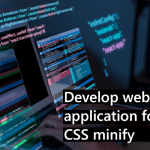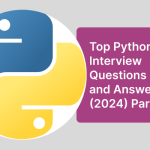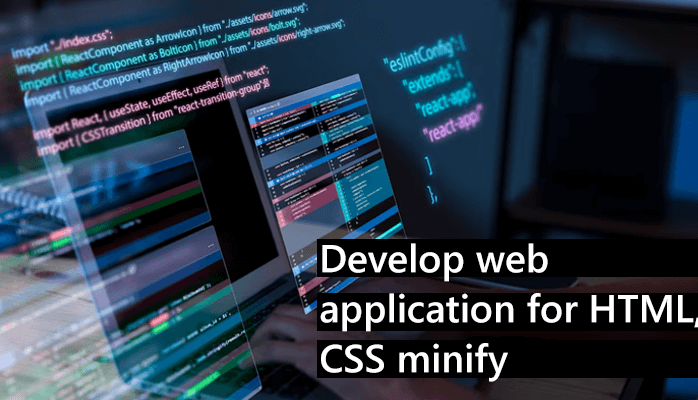Artificial intelligence, there has been a huge change in the field of UX design. With the help of artificial intelligence, many tools have been created which are making an important contribution in UX design.
With the help of artificial intelligence, it has become very easy to understand UX design. Complex UX design problems can be easily improved
AI is becoming a very valuable tool in UI/UX design, assisting designers in a variety of ways to streamline processes, enhance user experiences, and create more effective designs. Here are some ways AI can help in UI/UX design:
1. Data Analysis and User Research
AI can analyze vast amounts of user data to identify patterns, preferences, and behaviors. Designers can leverage this information to create more tailored and user-centric designs.
There are several AI-powered tools specifically designed to assist with UI/UX data analysis and user research. Here are some notable examples:
Pendo
Pendo offers a suite of tools for product analytics, user feedback collection, and in-app guidance. It uses AI to analyze user behavior, track feature adoption, and gather feedback through surveys and in-app messages, providing valuable insights to inform UI/UX design decisions.
Hotjar
Hotjar is a behavior analytics tool that combines heatmaps, session recordings, and surveys to understand how users interact with websites and apps. It uses AI to analyze user behavior and identify usability issues, allowing designers to optimize user journeys and improve conversion rates.
Optimizely
Optimizely is an experimentation platform that enables designers to A/B test different variations of web and mobile experiences. It uses AI to analyze experiment results, identify winning variations, and optimize user experiences based on data-driven insights.
2. Personalization with artificial intelligence
AI can help personalize user experiences by dynamically adjusting content, layout, and functionality based on individual user preferences and behavior. Designers can utilize AI algorithms to deliver personalized recommendations, content suggestions, and user interfaces.
AI-powered personalization tools can greatly enhance the UI/UX design process by tailoring experiences to individual users’ preferences, behaviors, and contexts. Here are some AI tools specifically designed for personalization in UI/UX:
Dynamic Yield
Dynamic Yield is an AI-powered personalization platform that offers tools for website personalization, recommendations, and A/B testing. It uses machine learning algorithms to analyze user behavior and deliver personalized content, product recommendations, and user experiences in real-time.
Adobe Target
Adobe Target is a personalization and A/B testing platform that enables designers to create personalized experiences across websites, mobile apps, and other digital channels. It uses AI and machine learning to optimize content, offers, and user interfaces based on individual user data and behavior.
Qubit
Qubit is a personalization platform that uses AI to analyze user behavior, segment audiences, and deliver personalized experiences across websites, mobile apps, and email campaigns. It offers features like product recommendations, social proof messaging, and behavioral targeting to enhance UI/UX design.
3. Prototyping and Design Generation
AI-powered tools can assist designers in rapidly generating prototypes and design iterations based on predefined parameters and user inputs. These tools can help streamline the design process and explore multiple design possibilities efficiently.
AI tools for Prototyping and Design Generation:
Sketch2Code
Sketch2Code is a Microsoft tool that uses AI to convert hand-drawn sketches into HTML prototypes. It uses computer vision algorithms to recognize UI elements in sketches and generate corresponding HTML code, speeding up the prototyping process.
Figma’s Smart Animate
Figma is a collaborative design tool that offers a feature called Smart Animate. It uses AI to automatically create animations between design screens based on changes in layout or content, helping designers prototype interactive UI designs more efficiently.
4. Automated Testing and Optimization
AI can automate the testing process by simulating user interactions and identifying usability issues, bugs, and performance bottlenecks. Designers can use AI-driven testing tools to optimize designs and ensure seamless user experiences across different devices and platforms.
AI-powered automated testing and optimization tools can significantly improve the efficiency and effectiveness of UI/UX testing processes by automating repetitive tasks, identifying usability issues, and optimizing user experiences. Here are some AI tools specifically designed for automated testing and optimization in UI/UX:
Test.ai
Test.ai is an AI-powered test automation platform that uses machine learning to automatically generate and execute UI tests. It analyzes user interactions and UI elements to create robust and maintainable test scripts, helping designers ensure the quality and reliability of their UI designs across different platforms and devices.
Mabl
Mabl is an autonomous testing platform that uses AI to automate end-to-end testing of web applications. It leverages machine learning to analyze test results, identify patterns, and prioritize test cases, enabling designers to focus on high-impact areas and improve the quality of their UI designs.
5. Natural Language Processing (NLP)
NLP-powered AI can analyze user feedback, reviews, and comments to gain insights into user sentiment, pain points, and feature requests. Designers can use this information to iteratively improve designs and address user needs more effectively.
AI-powered Natural Language Processing (NLP) tools can enhance UI/UX design by enabling designers to analyze user feedback, understand user sentiment, and improve communication with users. Here are some AI tools specifically designed for NLP in UI/UX:
MeaningCloud
MeaningCloud is a text analytics platform that offers NLP solutions for text classification, sentiment analysis, and semantic analysis. It uses machine learning algorithms to analyze user feedback and extract relevant information, helping designers understand user preferences, opinions, and behaviors.
NLTK (Natural Language Toolkit)
NLTK is a Python library for NLP that provides tools for text classification, sentiment analysis, and named entity recognition. It uses machine learning algorithms to analyze user feedback and extract meaningful information, helping designers understand user opinions, emotions, and intentions.
6. Accessibility
AI can help improve accessibility by automatically detecting and addressing potential accessibility issues in UI designs. Designers can leverage AI tools to ensure that designs comply with accessibility standards and are inclusive for users with disabilities.
AI-powered accessibility tools can assist designers in creating more inclusive UI/UX designs that cater to users with disabilities. Here are some AI tools specifically designed for accessibility in UI/UX:
axe Accessibility
axe Accessibility is an automated accessibility testing tool that uses AI to analyze web and mobile applications for accessibility issues. It provides actionable insights and recommendations to help designers identify and fix accessibility barriers, ensuring compliance with WCAG (Web Content Accessibility Guidelines) standards.
AccessLint
AccessLint is an automated accessibility testing tool that integrates with GitHub to provide continuous accessibility testing for web projects. It uses AI to scan code changes for accessibility issues and provide feedback to developers and designers in real-time, facilitating early detection and resolution of accessibility barriers.
7. Content Generation
AI can assist in generating content elements such as text, images, and graphics based on design requirements and user inputs. Designers can use AI-powered content generation tools to speed up the design process and maintain consistency across different design elements.
AI-powered content generation tools can help designers create engaging and relevant content for UI/UX designs more efficiently. Here are some AI tools specifically designed for content generation in UI/UX:
Phrasee
Phrasee is an AI-powered copywriting tool that generates email subject lines, ad copy, and other marketing content. It uses natural language processing (NLP) algorithms to analyze language patterns and generate high-performing copy, helping designers create compelling content for UI/UX designs.
OpenAI’s GPT-3
OpenAI’s GPT-3 (Generative Pre-trained Transformer 3) is a powerful language model that can generate human-like text based on user prompts. It can be used to generate a wide range of content, including product descriptions, user interface text, and conversational interfaces, helping designers create compelling and relevant content for UI/UX designs.
Jarvis by Conversion.ai
Jarvis is an AI copywriting assistant that generates marketing copy, blog posts, and social media content. It uses natural language processing (NLP) algorithms to analyze user input and generate human-like text, enabling designers to create content quickly and effectively for UI/UX designs.
8. Predictive Design
AI algorithms can predict user actions and preferences, allowing designers to anticipate user needs and tailor designs accordingly. Designers can leverage predictive analytics to create more intuitive and user-friendly interfaces.
Predictive design tools powered by AI can help designers anticipate user needs, behaviors, and preferences, enabling them to create more intuitive and user-friendly UI/UX experiences. Here are some AI tools specifically designed for predictive design in UI/UX:
Adobe Sensei
Adobe Sensei is Adobe’s AI and machine learning platform integrated into various Adobe Creative Cloud applications, including Adobe XD. It offers features like Auto-Animate, which predicts motion transitions between screens, and Content-Aware Layout, which suggests layout adjustments based on content changes, facilitating predictive design in UI/UX.
Sketch with Anima and Sketch2React plugins
Sketch is a popular design tool among UI/UX designers, and plugins like Anima and Sketch2React leverage AI to enhance prototyping and design generation capabilities. These plugins enable designers to create interactive and responsive designs with predictive elements that adapt to user interactions and behaviors.
InVision with Design System Manager (DSM)
InVision DSM is a design system platform that enables designers to create and maintain design libraries. It uses AI to analyze design patterns and suggest updates to design systems based on changes in user behavior and preferences, facilitating predictive design in UI/UX.
By leveraging AI in these ways, designers can enhance the UI/UX design process, create more personalized and engaging user experiences, and ultimately deliver products that better meet user needs and expectations.
You May Also Read:
What is Generative AI? AI Examples & How it Work?
Rise of Artificial Intelligence and Machine Learning in the Hospitality Industry











